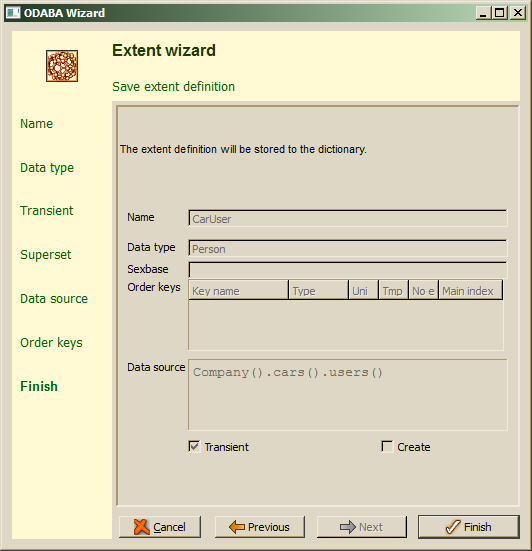Defining virtual extent
Virtual extents are not stored as such but represent the result of a query or access path. In contrast to temporary or transient extents, virtual extents can be accessed sequentially or by position, only, but not by key. More details are described in the "Virtual collections" sub topic of the Reference documentation.
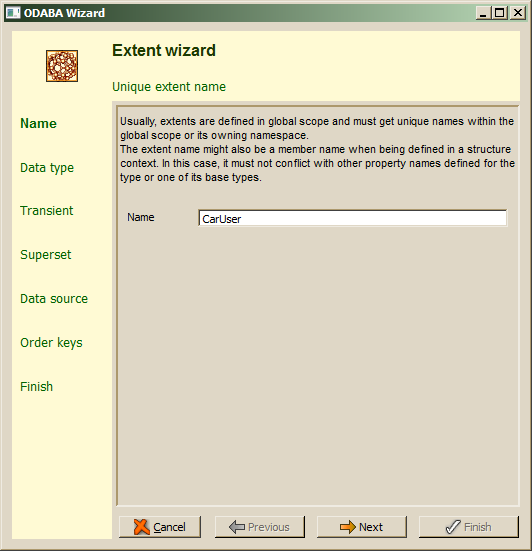
Extent names have to be unique within the resource database (dictionary) or the (next higher) active name space. Extent names are technical names and must not contain special characters or spaces except underscores. After filling in the extent name, Next should be pressed in order to continue. When the extent name is not correct or does already exist, an error will be displayed in the wizard's message area.
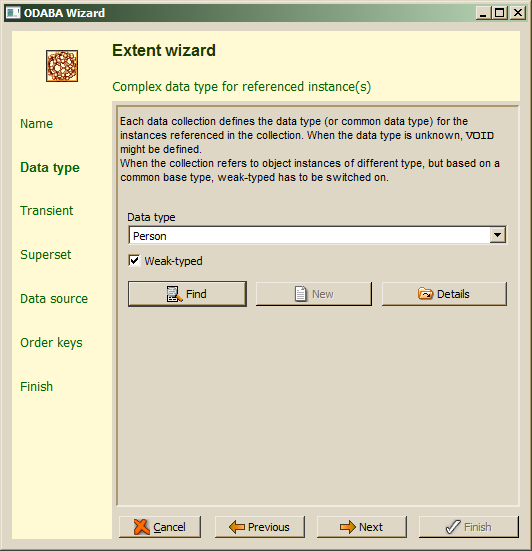
Virtual collections require the complex data type for instances in the view or access path result. For selecting the data type, one may enter the type name directly in the Data type field or use enhanced find by pressing the Find button, which allows selecting a data type defined in the project or a system data type. When the data type entered does not yet exist, one may press the New button in order to define a new data type. In this case, a sub wizard pops up (Data Type Wizard), which is described in chapter "Data Type Wizard". For viewing the type definition for the selected type, the Details button might be used.
When the result set refers to instances with different types, Weak-typed should be switched on, while the data type defines the common base type for all instances in the result set.
The Next step allows choosing an appropriate collection type.
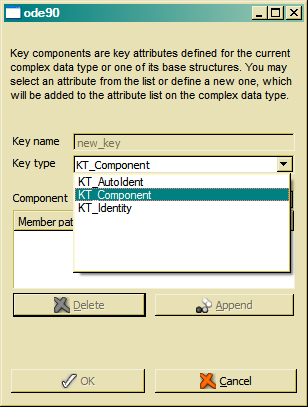
For defining a virtual collection representing a query result, the collection type virtual collection has to be selected.
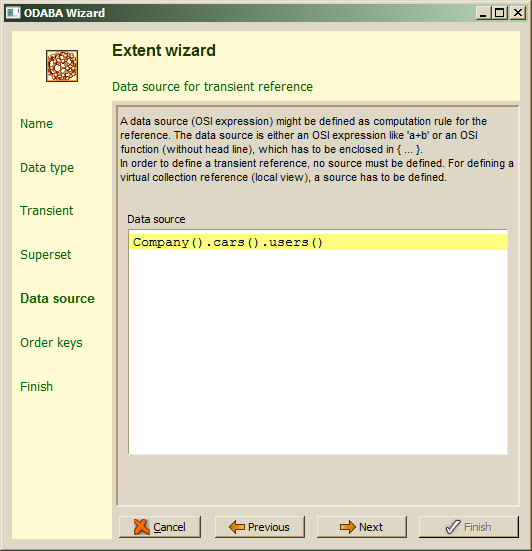
Virtual extents always require a data source definition. This must be either a query (OQL) expression or an access path. Since access paths are more powerful and include OQL queries, it is suggested always defining an access path.
the Next button directly leads to the extent definition summary.
